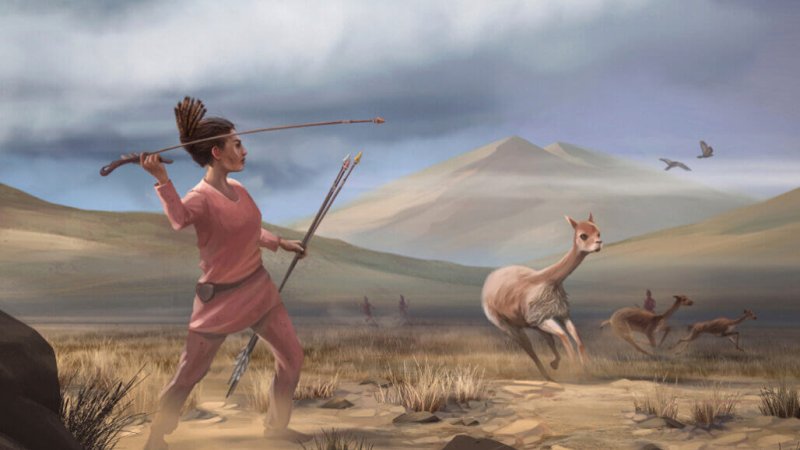In 2018, during archaeological excavations at a high-altitude site called Wilamaya Patjxa in what is now Peru, researchers found an early burial that contained a hunting toolkit with projectile points and animal-processing tools. The objects accompanying people in death tend to be those that accompanied them in life, researchers said. It was determined that the hunter was likely female based on findings by the team’s osteologist, James Watson of The University of Arizona. Watson’s sex estimate was later confirmed by dental protein analysis.
The surprising discovery of an early female hunter burial led the team to ask whether she was part of a broader pattern of female hunters or merely a one-off. Looking at published records of late Pleistocene and early Holocene burials throughout North and South America, the researchers identified 429 individuals from 107 sites. Of those, 27 individuals were associated with big-game hunting tools — 11 were female and 15 were male. The sample was sufficient to “warrant the conclusion that female participation in early big-game hunting was likely nontrivial,” researchers said. Moreover, the analysis identified the Wilamaya Patjxa female hunter as the earliest hunter burial in the Americas.
Statistical analysis shows that somewhere between 30 to 50 percent of hunters in these populations were female, the study said.































